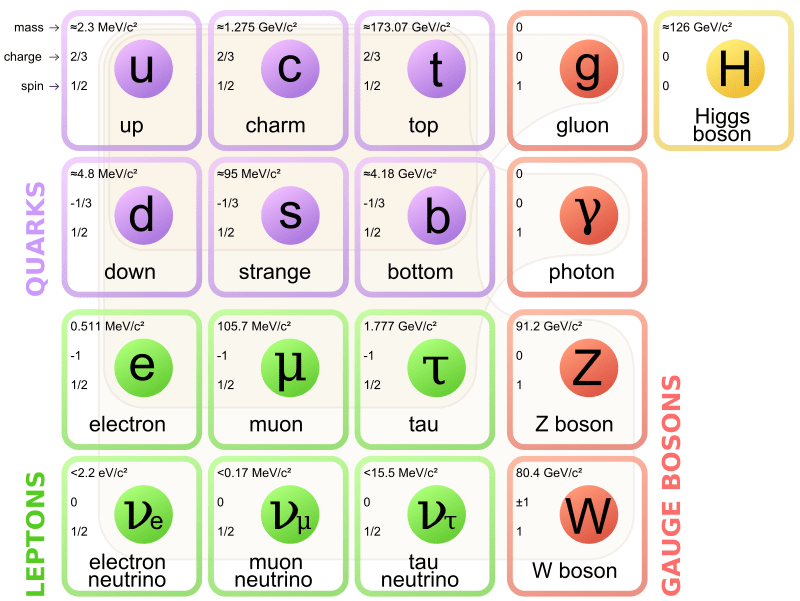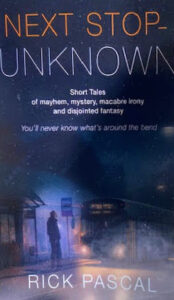Continued from Standard Model and particle interaction – Part 1
Do matter and antimatter canceled out to nothing? No, it results in the emission of energy. It took quantum physics until 1932 to find anti-matter named positron, which is the antiparticle of the electron. Nature is no fool, even for its own existence it allowed a little more matter than anti-matter at the time of big bang, otherwise, everything would annihilate and we would not be here to talk about nature and GOD. Empty (NOTHING) is not so empty; it is full of energy fields gifted by nature. Modern scientists understand the process of the conversion from mass to energy and energy to mass at a most fundamental level.

Standard Model
Last 60 years particle physicists found many more subatomic particles.
Scientists’ community named their discovered particles with funny names. We just have to stick to those names.
There are three types of Quarks, small, medium and large quark particles and small being the most stable. Medium quarks are known as charm and strange, large quarks got the name as top and bottom quark.
Leptons and Quarks are called Fermions. Leptons are grouped in two. Charged group Leptons are the electron, muon, and tau.
The second non-charged group of Leptons are neutrinos. Up, down quarks and electron are the building block of the universe. Others found in the laboratory.
Without any binding force, all fundamental particles would have scattered everywhere as if dancing without partners. What bound them together? – Four force particles called exchange particle or gauze boson. These four particles are communicators among other particles such as leptons and quarks.
Massless Gluon effectively binds proton and neutron in the Nucleus. Similarly, a photon is massless. It is an electromagnetic force carrier and communicator of charged particles. A virtual photon acts upon the charged particles.
Boson particles named ‘Z’ and ‘W’ are related to the weak force. It is the binding force of the quarks in the Proton and neutron.
Why some subatomic particle has mass? The answer is the Higgs boson – contributor of mass to all sub-particles – a lot of work is going on at present.
Great scientist Dirac conceptually realized that the universe must need anti-matter. It was first tested in a laboratory in 1932, and the first one named ‘positron’, antimatter of electron.
We commonly relate the mass and energy of a particle; scientists found spin as a magnetic moment must possess inherently by each sub particle for the conservation of energy and momentum.
Particle interaction is the most important aspect of particle creation and annihilation process. Two charged particles repeal and uncharged particles attract – But why? This explains by (QED) quantum electrodynamics. Scientists, physicists use Feynman diagram for the explanation of particle creation and mass-energy interaction.
When one electron comes close to another electron they repeal. There is an interaction that goes on between the particles. We don’t see it, but it is happening behind by the photon as the communicator force carrier on electron and gauze boson are interacting as force carriers.
How proton converts to neutron in the sun? Why? We always say SUN is the source of energy. GOD, the ultimate architect realized SUN is needed for the survival of his most powerful composite object – human. It is needed for its own survival. Who will keep asking GOD other than the humans? Nature made sure of a continuous process in the SUN where 2 protons combined with 2 neutrons forming helium nuclei thereby releasing a massive amount of energy which is our source of life.
This proton converts to neutron by the emission of W+ boson particle which in turn creates very short-lived positron (antimatter of electron) and a neutrino. Short-lived positron (antimatter) and electron annihilate emit a huge amount of energy. Trillions of harmless neutrinos bounce around us. This is the process happening in the SUN on a continuous basis for billions of years. Scientists predict it will go on for another 5 billion years. So, enjoy while you can!
















Comments »
No comments yet.
RSS feed for comments on this post. TrackBack URL
Leave a comment